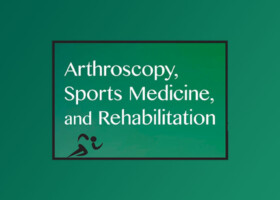
Authors:
Elrick BP, Arner JW, Horan MP, Rakowski DR, Ruzbarsky JJ, Dekker TJ, Goldenberg GT, Millett PJ
Abstract:
Purpose:
The purpose of this study was to compare outcomes between anterior shoulder instability patients with and without glenolabral articular disruption (GLAD) lesions after undergoing arthroscopic Bankart repair and to evaluate potential risk factors for inferior outcomes and recurrent instability.
Methods:
Prospectively collected data were retrospectively reviewed for patients who underwent arthroscopic Bankart repair with and without GLAD lesions at a minimum of 2 years follow-up. Consecutive patients were matched by age, sex, and number of anchors. Patient-reported outcomes (PROs) were evaluated before and after surgery, including American Shoulder and Elbow Surgeons, Single Assessment Numeric Evaluation, Quick Disabilities of the Arm, Shoulder and Hand, Short Form-12 score, and satisfaction. Recurrent dislocation, subjective instability, and reoperation were analyzed. Additionally, PROs were assessed on the basis of GLAD lesion characteristics.
Results:
A total of 54 patients (27 GLAD, 27 control) with a mean age of 28.9 ± 11.6 years were analyzed at mean 4.5 ± 1.9 years (range, 2-9 years) follow-up. Thirty-eight (70.3%) of the participants were male. Patients in both groups experienced significant improvements in all PROs (P ≤ .006 for all measures) and reported high median satisfaction (scale 1-10: 10 vs 10, P = .290) at final follow-up. Two patients in the GLAD cohort and 1 in the control cohort underwent reoperation (P = .588). Four (14.8%) patients in each group reported recurrent dislocation (P = 1.0). Additionally, 2 (7.4%) GLAD patients and 1 (3.7%) control patient reported subjective shoulder instability after surgery (P = 1.0). No significant differences in PROs were observed based on anchor/labral advancement or treatment with microfracture, nor were significant correlations observed between GLAD lesion size and PROs (P > .05 for all).
Conclusion:
Arthroscopic Bankart repair in patients with GLAD lesions resulted in significantly improved outcomes with high satisfaction, which was no different when compared with those without GLAD lesions.
Level of evidence:
Level III, retrospective comparative study.
You can download the study:
